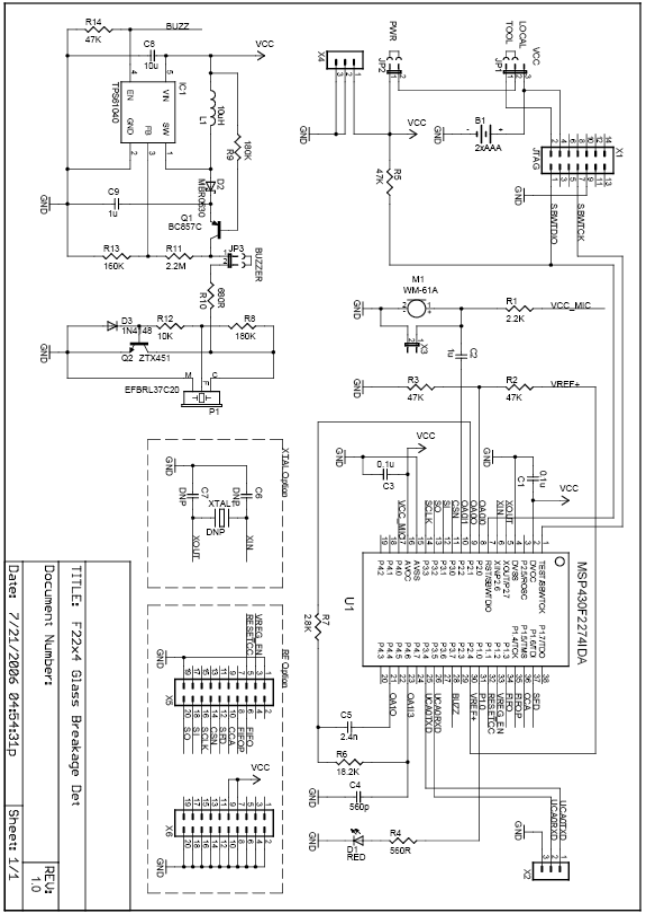SLAA351A April 2007 – November 2018 MSP430F2232 , MSP430F2232 , MSP430F2234 , MSP430F2234 , MSP430F2252 , MSP430F2252 , MSP430F2254 , MSP430F2254 , MSP430F2272 , MSP430F2272 , MSP430F2274 , MSP430F2274
4 Hardware Schematic
This section shows the hardware design schematic for the glass-breakage detector board. Figure 13 shows the schematic of this board. The zip file at www.ti.com/lit/zip/slaa351 has all of the necessary files to reproduce the hardware and software designs.
 Figure 13. MSP430F2274 Glass-Breakage Detector Board Schematic
Figure 13. MSP430F2274 Glass-Breakage Detector Board Schematic